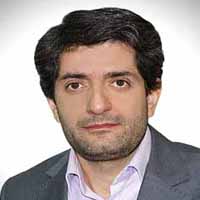Preparation of a Corpus Linguistics of Non-Iranian Learners of Persian: the case of the writings of Chinese learners of Persian
The distinction between speech and writing as two types language skills is a controversial area in modern linguistic research. From this perspective, the Persian language, due to the considerable differences between the spoken and written forms, can be of particular complexity in education, especially in non-Persian languages. Therefore, in this research we intend to study the use of speech forms in Farsi productions of foreign learners and Besides we want to know to what extent language learners employ spoken words properly without provide them with direct Persian spoken instruction and relying solely on the native environment?. besides these products are subject to a particular pattern or not.
Samples of this research were collected from intermediate level Persian students at Dehkhoda Institute. The results of this study indicate that language learners could produce spoken Persian without direct instruction of spoken form, and by relying only on the native language environment. They were taught only academically and with a focus on reading skills and grammar at Dehkhoda institute, furthermore spoken forms are used more accurately in vocabulary rather than in grammer. It is worth noting that in explaining the data of this study, the Input processing theory in general and the principle of content word priority in particular have been used. Analysis of the data has shown that according to this theory, products follow a certain pattern.
-
Improving the Teaching of Persian Verse Literature for non-Persian Speakers: A Comprehensive Evaluation of Educational Materials
*, Fatemeh Janatirad, Zoya Rezaei Mahalati
Journal Of Linguistic and Rhetorical Studies, -
Identifying Effective Curricula to Create General-Purpose Educational Resources for Teaching Persian to Non-Native Speakers
*
Journal of Curriculum Studies,



